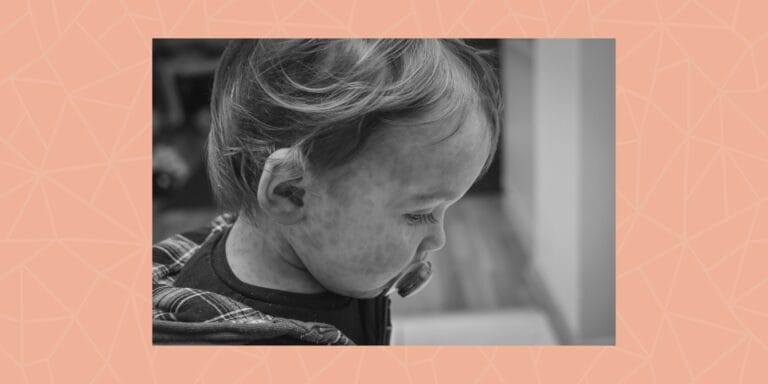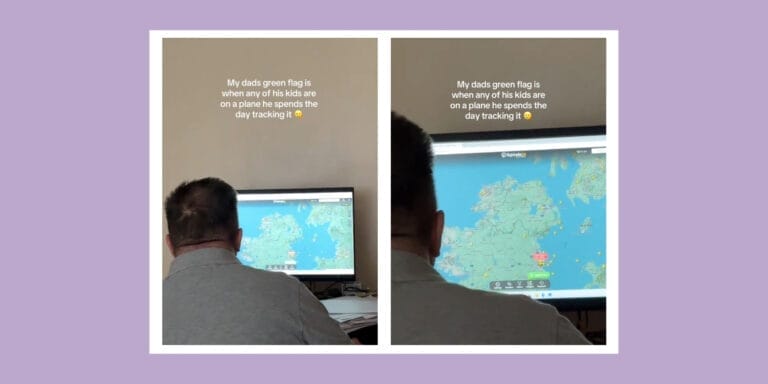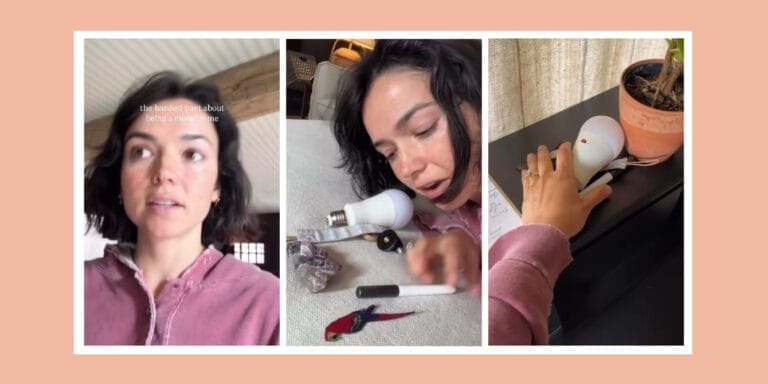Social distancing doesn’t have to mean loneliness—here’s how to stay connected

Why it's so important to text your best friend right now, mama.
Table of Contents
Study after study has shown that social distancing is the most important tool we have to protect ourselves as well as our families, friends and communities from the impact of coronavirus. It’s paramount that we all do our part to help control the spread of this disease.
It’s also incredibly strange that the most effective way we can support each other is to distance ourselves. But in doing so, we can experience a profound sense of togetherness.
I’m currently writing this while self-isolating at home with my 18-month-old while my husband, a physician, works at the hospital—a scene that will ring painfully familiar to many. As a clinical psychologist and friendship expert who studies the science of social connection—and, much more importantly, as a fellow human who yearns to feel connected—I’m increasingly concerned about the ways in which social distancing will contribute to loneliness and threaten our relationships and social ties.
We are hardwired for connection. Loneliness is quite literally toxic for our health; it’s as dangerous as smoking or having high blood pressure. It contributes to anxiety and depression, and it drastically decreases our quality of life.
If loneliness is toxic, then our social connections are the antidote. Investing in our relationships is one of the most important things we can do for our physical and emotional health—especially right now. Having close connections boosts our immune system, protects us from chronic health conditions, elevates our mood and helps us cope with stress…the very benefits so many of us are searching for as we shelter ourselves at home.
As we are all working to be responsible and keep others at a safe distance, it’s equally important that we find ways to stay connected.
Here are a few ways we can help ourselves and our children to stay connected while practicing social distancing:
1. Be honest about our need for connection
While the importance of social connection is universal, our specific needs vary from person to person. What matters more than the number of friends we have or how often we speak to loved ones is how supported and connected we feel.
When we’re coping with very real stressors and our mind is rightfully focused on our safety and security, it’s easy to ignore our need for connection. We convince ourselves that we don’t have the time or that connecting in new ways just isn’t worth the effort. In reality, the support we receive from our connections is the very thing that allows us to navigate these challenges.
We can work to meet our need for connection by encouraging self-reflection and asking ourselves (and our children) questions such as:
- When was the last time I connected with a friend or heard someone else’s voice?
- Am I really feeling bored (or hungry, tired or frustrated), or is it possible I’m lonely?
- What can I do to fulfill my need for social contact today?
- Have I asked the important people in my life what they need or expect?
- Disappointment and frustration are such normal human responses right now—so am I letting myself feel that?
2. Be creative with opportunities for connection
As parents, it’s difficult to prioritize our relationships when we’re facing significant stress and disruptions to our family routine. It can help to weave social time into our other activities:
- Chat with a family member while cooking dinner.
- Set up virtual lunch dates or co-working sessions with friends.
- Coordinate virtual playdates or a weekly show-and-tell with other kids.
- Find ways to volunteer from home as a family, so you can support causes you’re passionate about and witness people coming together.
- Start new family rituals like a morning “circle time” meeting or an afternoon power stretch (or silly dance party).
- Start virtual clubs or groups with friends.
When we work to show up for others in unexpected ways, it helps to inject new-ness into our relationships, especially when social distancing makes us feel bored and isolated.
3. Find comfort in micro-communities
We can’t expect our closest friends to relate to all of what we’re going through—every family faces its own unique challenges right now. While your friends certainly don’t need to have identical experiences to support you in meaningful ways, there’s value in connecting with people who do share your specific issues.
I’ve found myself turning to mothers working from home while caring for their kids, writers who are struggling to concentrate amidst the chaos and quiet, therapists moving their sessions online, and partners of health care workers who share similar feelings of anxiety, fear, and admiration. The exchanges I’ve had with others online, many of whom are strangers, have been comforting, uplifting, and incredibly validating.
4. Allow yourself to set boundaries
There may be times when the healthiest thing we can do for our relationships is to establish boundaries. Now is the time to connect with those who share our values—rather than getting caught up in trying to change a friend’s opinion. Find community with people who share your approach to the situation we’re all facing, rather than trying to change minds.
When chatting with friends who see things differently, it can be helpful to set limits on how often you speak, or the kinds of conversations you have. These limits can protect your health, as well as your capacity for empathy and patience.
Just as social distancing is not long-term, boundaries are not necessarily permanent. In fact, they may be the very thing that allows us to preserve our connections over time.
5. Strengthen the quality of your conversations
The biggest risk factor for loneliness is a lack of emotional intimacy. Now is the time for us to focus on having more meaningful conversations. Instead of sticking to the headlines, let’s focus on our individual experiences and share our ideas, fears and hopes with each other.
This situation is unprecedented and it’s important that we honor the feelings it brings with it. At the same time, it’s equally important to prioritize conversations that have nothing to do with COVID-19 or the experience of social distancing to remain connected and stop us from slipping into a cycle of co-rumination.
The quality of our conversations depends not only on what we share but how we share it. The more we can access vocal cues, facial expressions, and gestures, the more connected we feel and the fewer misunderstandings there will be. This is why I often recommend phone calls or video chats over instant messaging. This can be especially important for children and teens who are still working to develop key social skills (although, really, aren’t we all?).
Healthy communication starts at home, and we should model and encourage openness. Ask your children questions and allow them to pose questions in return. Validate how difficult it must be to not see their friends. Normalize emotions like loneliness, sadness or anxiety, while correcting misperceptions—it’s not uncommon for children to personalize difficult experiences, and many might wonder if they’ve done something to drive their peers away or worry that their friends or favorite teachers will forget about them.
It also helps to be transparent about our own sadness and fears while making an effort to talk about what we can do to cope. These conversations can protect our children’s hearts in the current climate, and are a helpful catalyst for connection within our families.
6. Practice gratitude for moments of connection
Gratitude has less to do with ignoring very real pain, discomfort or hardship and everything to do with making an effort to notice it—and balance it out with the goodness around us. We can work to appreciate people, conversations and experiences by talking about who and what brings us happiness and a sense of belonging, and encouraging our children to do the same.
No question: Social distancing will impact our relationships and communities in a big way. But appreciating the smallest of gestures will allow us to stay connected.
Let’s work to notice it all—from the smiles exchanged with neighbors and strangers, the thoughtful check-ins or offers to drop off groceries from friends, the health and safety of our children, and the overwhelming sacrifice of our healthcare workers and everyone contributing to essential services. These are the moments of connection that will ultimately help us build resilience and increase the closeness we feel in our relationships and communities.


































